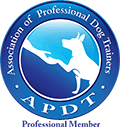Archive ABA :: The Cavalier King Charles Spaniel
by Michael Santoro
| Because of the exposure it's gotten on "Sex in the City", the Cavalier King Charles Spaniel is perhaps more widely known now than ever before. With roots that can be traced back to 19th century English aristocracy, these friendly, affectionate pets have enjoyed renewed popularity among the rich and famous (and the rest of us, too!). |
 |
|
|
King Charles I of England was so enamored of the toy-sized Cavalier Spaniels that roamed the royal palace that they were named in his honor. His successor, King Charles II, also helped perpetuate the breed. During the reign of Queen Victoria, it is suspected that the royal Cavs may have interbred with their Pug palace mates, thus altering the appearance of the breed -- the head became more domed -- and almost bringing it to extinction. Dogs with the newer look were called English Toy Spaniels. Thanks to the efforts of American Roswell Eldridge who, in the 1920s, offered financial rewards to anyone who could produce examples of the flatter-headed Cavalier, the breed has survived and is now thriving. |
||
Cavs typically stand 12 to 13 inches high at the withers and are slightly longer than they are tall, weighing 13 to 18 pounds. This makes them one of the larger of the toy breeds. Their faces have a soft, friendly, expressive appearance. Their gait matches this, having a happy, free, sporting look. The coat is long and silky and may be slightly wavy with longer, feathered accents on the ears, chest, legs and tail. There are four distinct coat colors:
- Blenheim (rich chestnut on pearly white background) -- named for Blenheim Palace
- Tricolor (black and white with tan markings on cheeks, inside ears, on eyebrows, inside legs, and on underside of tail)
- Black and Tan (black with tan markings)
- Ruby (rich reddish-brown all over)
The Cav will quickly become a beloved member of the family but, without proper training and socialization, problems may arise if there are rowdy, unruly children in the house, as these dogs usually prefer a calmer atmosphere.
This is truly a versatile breed. While they have a well-deserved reputation as pampered indoor companions (and designer handbag passengers!), their intelligence, quick learning, energy and happy, confident natures make them wonderful canine family members!




